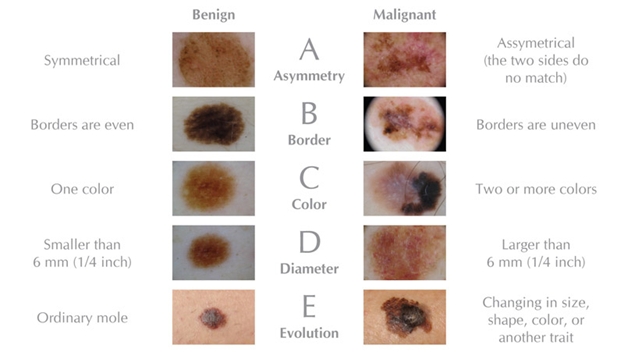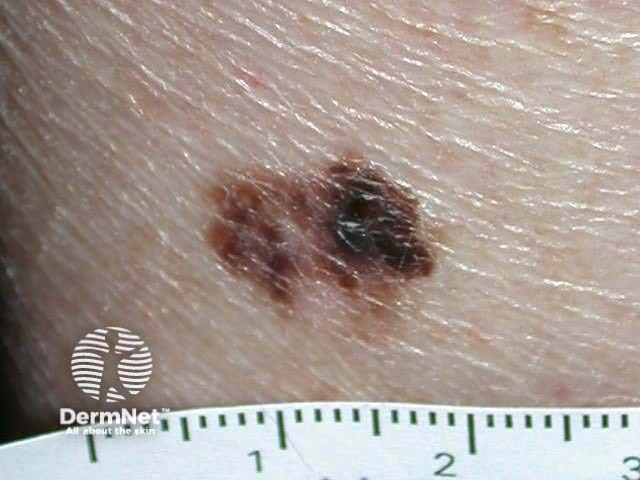It is important to examine your skin routinely, looking for any new moles as well as changes in the moles you already have. When you examine your moles, remember the ABCDEs of Melanoma and the Ugly Duckling Sign (see below).
1 ABCDEs
The ABCDE of melanoma is a helpful guide for identifying the warning signs of melanoma. Here’s a quick summary:
-
- A – Asymmetry: One half of the mole or spot is different or “asymmetric” from the other half.
- B – Border: The edges of the mole are irregular, not smooth.
- C – Color: The color is uneven, with different shades of brown, black, or even patches of red, white, or blue.
- D – Diameter: The mole is larger than 6mm (about the size of a pencil eraser), although melanoma can be smaller.
- E – Evolving: The mole changes in size, shape, color, or elevation over time

2 Ugly Duckling Sign
The “Ugly Duckling Sign” refers to a mole or skin lesion that looks distinctly different from all the other moles or spots on your body, similar to how an “ugly duckling” stands out from a group of swans.
Here’s what the Ugly Duckling Sign means:
-
- Comparison to Other Moles: Melanomas often appear different from surrounding moles, in terms of size, shape, color, or texture. If a mole seems to be unusual when compared to other moles on your body, it may be a sign of melanoma.
- Key Features: A mole that exhibits characteristics like asymmetry, irregular borders, unusual color, or rapid changes compared to the rest of your moles could be a cause for concern.
- Why It’s Important: The idea is that melanoma often doesn’t look like typical moles. Instead, it stands out from the other spots on your skin, making it easier to spot if you are regularly monitoring your skin.

